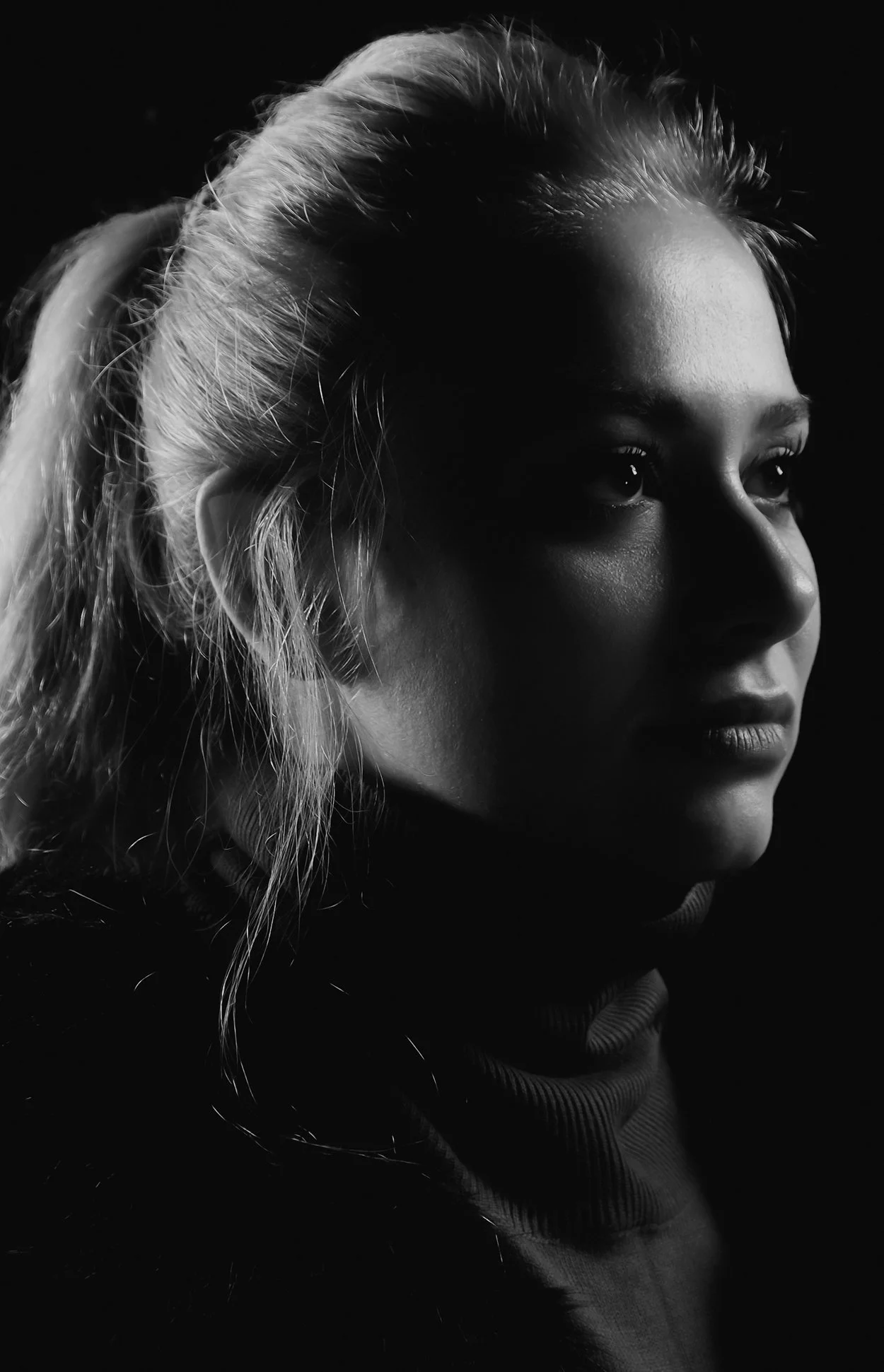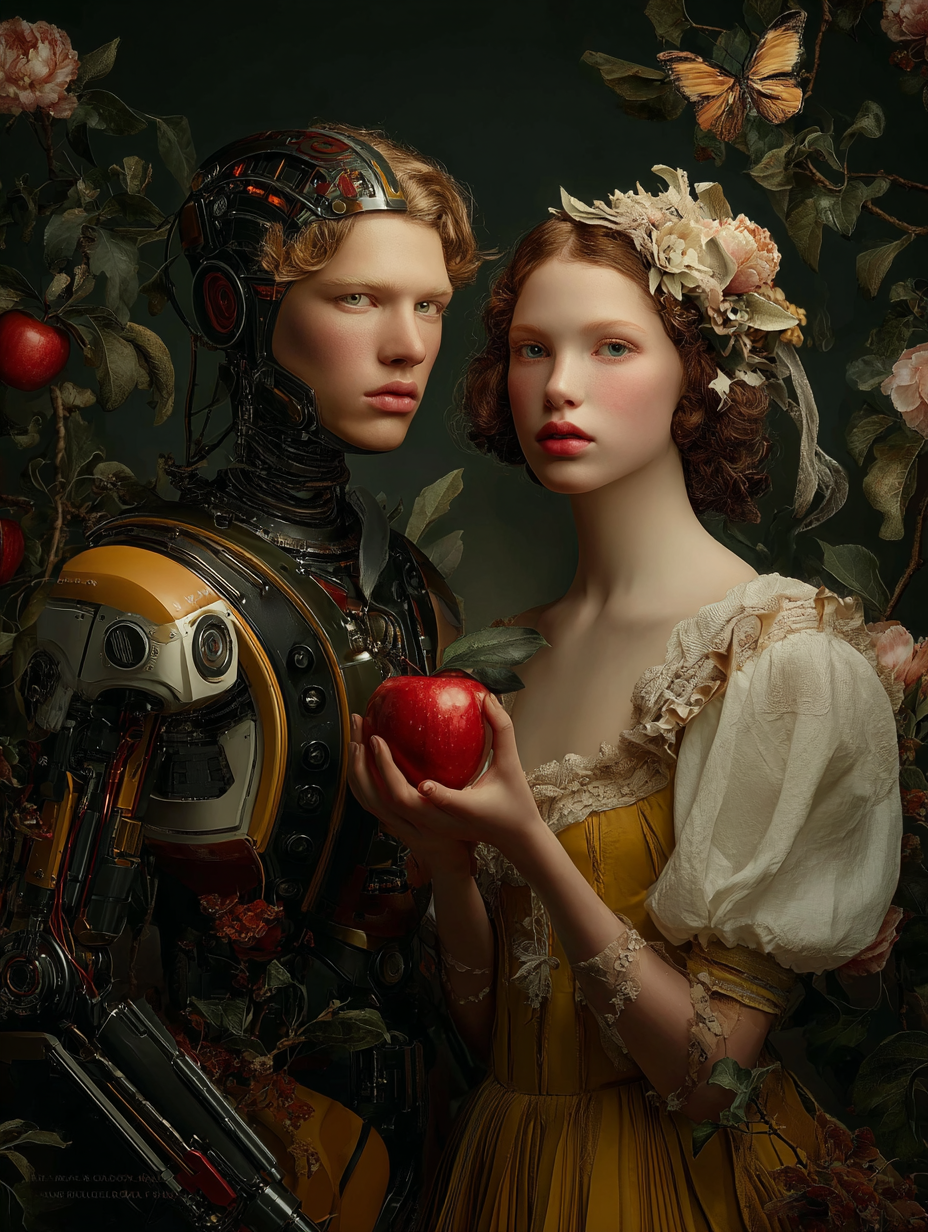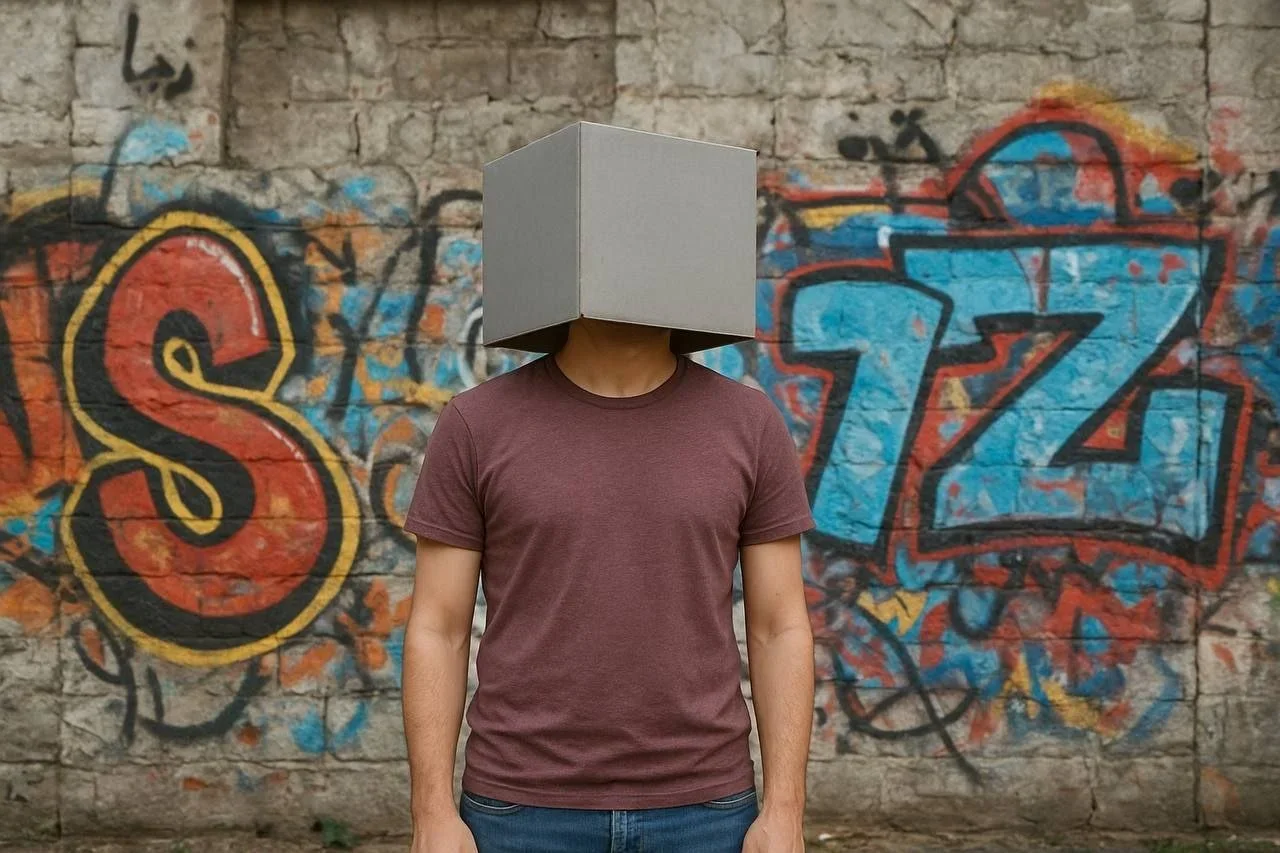10 Questions with Esra Sakar
Al-Tiba9 Art Magazine ISSUE19 | Featured Artist
Esra Sakar (b. 1992, Istanbul) is a fine art photographer and visual artist whose work blends traditional craftsmanship with contemporary conceptual approaches. Graduating top of her class from Marmara University's Faculty of Fine Arts, she draws on mythology, psychology, and archetypes to create visual narratives exploring memory, the subconscious, and identity. Her work has been exhibited internationally in London, Milan, Glasgow, Lancaster, and Istanbul, and featured in L’Œil de la Photographie as an artist project. She was recognised as an IPA 2025 Official Selection (Professional) and has been selected multiple times on One Eyeland. In 2025, she won the People's Choice Award at Doncaster Art Fair: Art as a Response to Mental Health 2025. Sakar's multi-faceted approach combines strong conceptual depth with a distinctive visual language, positioning her as an emerging artist with significant international potential.
Esra Sakar - Portrait
ARTIST STATEMENT
Esra Sakar approaches art as a means of connecting with the unseen. Her work navigates the delicate terrain between consciousness and the unconscious, delving into the shadows of memory, suppressed emotions, psychological fractures, and the elusive language of dreams. These elements form the foundation of her artistic exploration. Sakar seeks to amplify the inner worlds of individuals marginalised or silenced by society through various labels. She believes that every mind deemed "broken" often harbours a deeply intricate, sensitive, and meaningful universe. Through photography, she opens windows into these complex realms, inviting viewers on a journey inward. Drawing inspiration from both mythology and psychology, two timeless languages that attempt to interpret the human condition, Sakar's visual narratives are guided by archetypes, dreams, layers of consciousness, and trauma. For her, photography is not merely a tool for visual representation, but a vessel for echo, a residue of memory, and at times, a silent scream. In each image, she pursues what cannot be seen. Sakar creates quiet yet resonant spaces where viewers might lose themselves, confront their own reflections, or perhaps, feel a little less alone. For Sakar, art is one of the most graceful ways to transform the ache of the soul. It is this ache she follows sometimes in a dream, sometimes in a forgotten corner, and sometimes in a hidden fracture within us all.
Multiple Personality Disorder (from The Ghosts Within series), Digital Photography,35x50 cm, 2021 © Esra Sakar
The Ghosts Within | Project Statement
The Ghosts Within series is an invitation to reveal psychological struggles made invisible by society. It embarks on a journey through the interplay of darkness and light within the inner worlds of marginalised individuals. These portraits seek not only to capture faces but to witness the most fragile moments of the soul and the inner battles they face. Each frame offers an experience and emotion that bears witness to the human struggle for existence.
Depression © Esra Sakar
AL-TIBA9 ART MAGAZINE ISSUE19
Get your limited edition copy now
INTERVIEW
Please introduce yourself to our readers. How would you describe the kind of artist you are and what drives your practice?
I am Esra Sakar, a fine art photographer and visual artist born in Istanbul. My connection to art began in childhood; I grew up in a home where theatre, music, and painting intertwined. That environment taught me that art is not merely a pursuit, but a way of being. What drives my practice is the desire to make the unseen visible. Psychology, mythology, and dreams, in particular, are inexhaustible sources of inspiration for me. Because the archetypes, wounds, and dreams carried within each individual are part of an invisible language. For me, photography is the way to translate that language through light, shadow, body, and gaze. Ultimately, what moves me is the transformative power of art. The possibility that an image might resonate in hearts and minds opens a space for healing, both individual and universal. I see art not only as an aesthetic expression, but also as a bridge that touches one’s inner world and the truths of others.
You graduated top of your class from Marmara University’s Faculty of Fine Arts. How did your academic background shape your artistic voice, and what influences or experiences helped you along the way?
My education at Marmara University did not merely teach me how to “produce”; it revealed to me the fragile bond between the image and the human mind. I learned there that art is less a skill and more a persistent question posed to existence itself. The academic environment gave me discipline, critical perspective, and historical context; yet above all, it deepened my personal relationship with images. Each class, each studio session, was a kind of mental excavation, an attempt to unearth the images buried within my subconscious. My research into psychology, mythology, and archetypes became the compass for this excavation. Along the way, I drew not only from art history but from the stories of people on the street, from moments when I realised that even silence can carry a scream. My academic background taught me this: an artist is as much a witness to what is unseen as to what is seen. And my task is to convey that unseen with as much honesty as possible to the viewer.
Panic Disorder © Esra Sakar
Prosopagnosia © Esra Sakar
Your work blends traditional craftsmanship with contemporary conceptual approaches. How do you balance these two worlds in your creative process?
For me, tradition and contemporaneity are not opposing poles but different bends of the same river. Traditional craftsmanship is the memory of my hands; contemporary conceptual thinking is the alertness of my mind. One reminds me of my roots, while the other urges me to keep my gaze fixed on the horizon. In my creative process, I do not set these two languages against one another; I weave them into each other. Traditional techniques lend my images weight and a texture of time; conceptual thought lifts that weight, revealing what is otherwise unseen. In finding this balance, both intuition and deliberate choice are at work. At times, it is the technique that carries the meaning; at others, the meaning shapes the technique. Ultimately, what matters most to me is allowing the knowledge of the past to converse with the questions of the present.
Mythology, psychology, and archetypes are recurring sources of inspiration for you. What draws you to these timeless languages when exploring memory, identity, and the subconscious?
Mythology, psychology, and archetypes are not merely sources of inspiration for me, but ancient keys to the endless riddle of being human. As Jung observed, archetypes reveal the shared memory hidden beneath our individual stories; mythology carries this memory through millennia in the language of symbols. Psychology casts light into the dark folds of those symbols. For me, the essence lies in the attempt to understand the human, this fragile, complex, sometimes silent, sometimes tempestuous sphere of the mind where an invisible universe turns. In exploring memory, identity, and the subconscious, these three languages serve as my compass, binding past to present, the conscious to the unconscious, the seen to the unseen. I return to them in each new work because they carry the oldest, most honest, and most unadorned stories of what it means to be human. And perhaps art is the most graceful way to make those stories heard again.
Alien Hand Syndrome © Esra Sakar
In The Ghosts Within, you address psychological struggles often made invisible by society. What was the starting point for this series, and how did you approach translating such delicate experiences into visual form?
“The Ghosts Within” began for me with a single question: how can the invisible be made visible? Society often refuses to confront fragility; it silences psychological struggles or reduces them to a label. For me, the starting point was the desire to break that silence. In creating this series, I did not see people as subjects to be displayed, but as echoes of their inner worlds. I was less interested in faces than in the emotions that shaped them. Long conversations, silences, the traces left by books I had read, and the resonance of my own experiences, all of these gradually found their way into the images. I know, too, how an unseen wound can quietly permeate everything one carries. These photographs, then, are not portraits in the traditional sense; they are maps of the inner landscape, silent images that record the weight of fragility. Behind what is visible, there is always another face, another story. I only dared to look toward that place.
The piece “Multiple Personality Disorder” explores fragility and inner battles. How do you navigate portraying such complex emotional states while being able to speak to a broader audience?
In creating this work, my aim was to show that what appears as multiple personalities or a fractured self is, in truth, a silent dialogue one carries with their own contradictions and inner rifts. As Jung suggested, within every soul light and shadow coexist; I sought to map those shadows.
Art is never mere representation; it is an echo, a collision, a tremor. For me, this piece was not about depicting a “disorder,” but about unveiling the universal fragility hidden within it. After all, we all live with our fragments, sometimes exposed, sometimes concealed.
I conceived of the photograph not as a showcase but as a bare mirror. The faces that look directly at the viewer become a surface through which they are invited to sense their own fractures, their own fragmentations. In this way, the work extends beyond an individual story and reaches into the ruptures that dwell within the observer.
You’ve said that for you, photography is “a vessel for echo, a residue of memory, and at times, a silent scream.” Could you elaborate on that? How does this concept influence your work?
For me, photography has never been merely the act of producing an image. Each frame carries the echo of something unseen: the unresolved trace of a memory, the hidden residue of a feeling. At times, a photograph becomes a silent scream, an expression of what cannot be spoken, resonating on both a personal and universal level. As Jung observed, the unconscious holds not only what has been repressed but also what is archetypal. I regard photography as a vessel that renders these deeper layers visible. A face, a shadow, a moment of silence, each transforms into a symbol. And when the viewer encounters the image, they are, in fact, confronted with the echoes of their own unconscious. Thus, photography for me is less about representation and more about creating a bridge, a passage between the residues of memory, the forgotten or suppressed emotions, and our shared collective shadow. This concept continually guides my work because photography should not only be what we see, but also what we feel, what reverberates within us.
© Esra Sakar
© Esra Sakar
© Esra Sakar
© Esra Sakar
Your work has been exhibited internationally and recognised with awards like the People’s Choice Award at Doncaster Art Fair. Have you noticed differences in how audiences from different cultural contexts interpret your images?
Yes, the way audiences relate to my work shifts across different cultural contexts. In some places, people focus more on the aesthetic or technical aspects of photography, while in others they form a more emotional, even intuitive connection. In certain societies, photography is seen primarily as a document; elsewhere, it is understood as a reflection of an inner experience. Along this journey, having my work exhibited in different countries and being honoured with distinctions such as an Honorable Mention and a Jury Top 5 Selection at the International Photography Awards (IPA) has shown me that, regardless of cultural background, images sometimes resonate in strikingly similar ways. What matters most to me is when viewers recognise their own fragilities, their own shadows, within the work. This opens the possibility of empathy, both with their inner world and with others who may have lived through similar experiences. In this way, my work ceases to be solely my own narrative; it reshapes itself through the presence of the viewer, merging with their story and becoming something new.
Much of your work gives voice to those marginalised or silenced by societal labels. What do you hope viewers feel or question when they encounter your work?
For me, art is a way of making the silenced visible. The stories of those whom society labels as “other” are not separate from us; they echo within each of us, because we all live with our own shadows. When viewers encounter my work, they are not only looking at “their” stories but also at their own vulnerabilities.
I hope this encounter awakens in them a question, unsettling yet transformative: Who defines what is “normal”? Perhaps the real task is not merely to understand those who are labelled, but to recognise the fractures within ourselves and approach the fractures of others with empathy because art is not only about giving voice to others, but also about confronting the silences within ourselves.
© Esra Sakar
Looking ahead, what new directions, projects, or themes are you most eager to explore in your future practice?
When I look ahead, I want to explore art not merely as an aesthetic form of expression, but as a practice of healing, transformation, and bridge-building. I will continue to work on the traces left on the individual by psychology, collective memory, and the fractures within society. Yet I imagine doing this not only through a focus on individual experiences, but also through projects that reveal the shared vulnerabilities of people from different cultures and geographies.
In my future works, I plan to move toward installations and interdisciplinary collaborations that create more interactive connections with the audience, spaces where their own experiences can also become part of the work. I believe the future of art does not lie in a single voice, but in a common ground shaped by multiplicity.
For me, the greatest excitement is hidden in those moments when art makes fragility visible, and through this visibility, opens a space for both individual and collective healing. In the coming period, my intention is to discover, deepen, and share precisely these spaces.
Artist’s Talk
Al-Tiba9 Interviews is a curated promotional platform that offers artists the opportunity to articulate their vision and engage with our diverse international readership through insightful, published dialogues. Conducted by Mohamed Benhadj, founder and curator of Al-Tiba9, these interviews spotlight the artists’ creative journeys and introduce their work to the global contemporary art scene.
Through our extensive network of museums, galleries, art professionals, collectors, and art enthusiasts worldwide, Al-Tiba9 Interviews provides a meaningful stage for artists to expand their reach and strengthen their presence in the international art discourse.




























